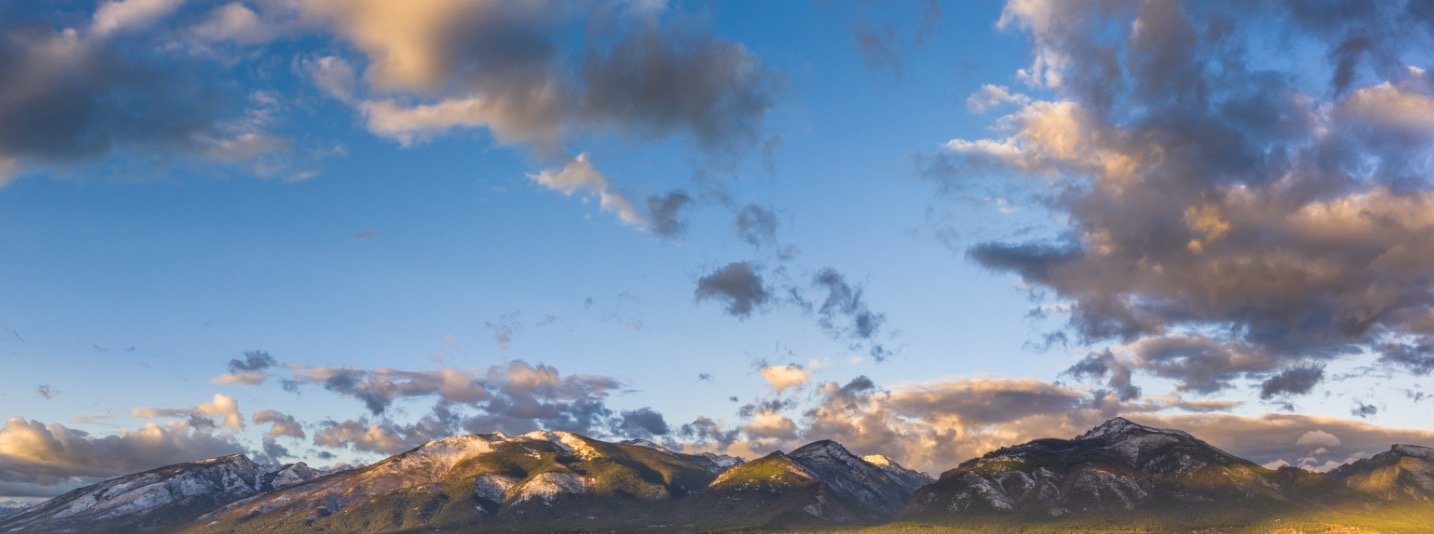I started this newsletter last week, writing from our pasture while perched on a 5-gallon bucket and questioning my beverage choice. The beer from the Bitterroot Brewery, while delicious as always, was maybe not the best for already-below-freezing temps before dusk. I’m bundled in my down jacket, patched with both construction adhesive and fabric patches to keep the down from trickling out of all the punctures of the season: snags and tears from old latches on the barn, scrap metal cleanups, a sharp edge of the tractor a or some rusted metal from crawling under a hen barn at night to fish hens out that haven’t yet learned to roost up. I’m wearing mitts that allow my fingers to type (Sabrina’s mom sent them to the team some winters ago). As the light dips, I change settings on the iris of the camera, coaxing more light to the sensor. I’m waiting, yearning, for one last batch of migratory snow geese. It’s a bit ironic; because with our cold front, coupled with the inversion that cools the air even a few degrees more, I should be hoping that the birds are in Utah, or perhaps Arizona by now. But the birds moving, migrating on climatic cues, and trying, has become a bit of a metaphor for the project that I’ve been working on. I’m hoping for one last flight.
We hear the birds sometime as we are falling asleep, maybe at 11. I know from watching them over the past days that they are anywhere from 300 feet to 800 feet and that the birds flying at night go even higher. 1500 feet. I’m not worried about those heights anymore; my camera with the help of the lithium batteries, kept warm with my own layer of down, has a rather amazing tenacity. The question is not really about the technology; it’s about whether I or we can keep up. Based on my odds of not getting the footage that I want over the past few days, I feel like there’s a good chance I’ll miss this one shot; this last attempt before the geese are done flying. Despite my best attempt, and literally 27 satellites that are guiding my drone camera this evening, and my own observation of the patterns and times of the migration, I’ll probably just chalk this experience up to getting cold and having a nice long sit in our pasture. I take a break to change the camera settings. I look nervously at the sky, cloud cover. I’m scanning for birds, temperature. I’m looking at the cloud cover. I’m scuffing the snow out of the way to the pasture we’ve irrigated and tended, not as well as we could for the past season — 8 months and then some. It’s changed a lot, this ground. I’m looking for signs. I’m wondering if those last carrots in the ground aren’t frozen. I’m wondering how we can continue to do it all.
It’s crazy. Living in this time of technology, automation that keeps our three walk-in coolers at just the right temp, satellites above, that so much of farming relies on luck, chance, and tweaking what we need out of plants to keep going, season after season.
We managed to get everything out of the ground that we planted, nearly. What we couldn’t we got protected with hoops and row cover. It was a long wait, last week, waiting for the snow to melt to figure out those dozen last beds of what made it or didn’t, through the snow that provided the insulation, steel wire hoops (bent under the snow load) that provided some additional airspace of insulation, and some soggy-wet row cover, that provided a bit more protection. A good bit made it: all the carrots: some of the last hearty salad. And then yesterday, perhaps because of poor row covering or not enough venting, two beds in a new protected space, a tunnel we had just moved before the snow, didn’t make it. We didn’t really discover how bad the salad was until we harvested it, ran it through our wash-pack shed spinners, and even bagged it up.
But that’s farming. It’s always something new, especially if we push the edges of what’s possible, for particular crops. This will be about the fourth year of very serious winter growing at the farm. In just a day or two, we’ll be launching our 12-week winter CSA, with signups opening just days before the first pick-up. We cringe at that a bit, knowing it’s been a goal for weeks, and that we’ll be asking folks to jump right in with little notice. But the winter membership is so important: everyone on our team now wants to stay on through the winter, and our biggest challenge will be to create that delicate farm balance that supports the team, feeds the community, and allows us, (Noah and Mary) to be able to keep dreaming big, creating this farm life that involves so much of the community, story telling, and creating a space that we love. Now more than ever, as we work to support a larger team that must run more and more independently, as we work to finish the last bits of our new wash and pack building, and as we work to anchor more into the valley, supporting a local food system, we are going to need your help. It’s not just about us about anymore. It’s about our team. Our crew is on the team, and so on are you. We are so grateful for our community. As I write, and as I think about the stories we want to tell and share, it so often seems that we are right back where we started.
One reason we haven’t written in about three weeks — to you or our farm members is that we really had our own perfect storm of events. Two (now three?) people on our team had covid (don’t worry, there was no farmstore exposure or risk), the last market was canceled because of temperatures would freeze produce, one water heater was completely replaced, and a walk-in cooler we leant out to some other farmers in the valley needed a major repair (a few days ago those of you pulling up to our farm barn may have seen the small pile of sheet metal scrap we had created). It’s never a dull moment.
Migrating with the geese, running on threads of the jet stream, farming with the environment, balancing light, hope, and the seasons and undertainty. We couldn’t do this without you. We’re sorry for erratic nature of the once-weekly newsletters, and we look forward to working on more stories over the winter. Watch for details on the winter membership signups over the next few days, as we get the forms and details sorted out; we are looking forward to feeding you through the cold months again, taking time for slow roasts and soups and savoring winter.
Gratefully your farmers,
Noah and Mary

